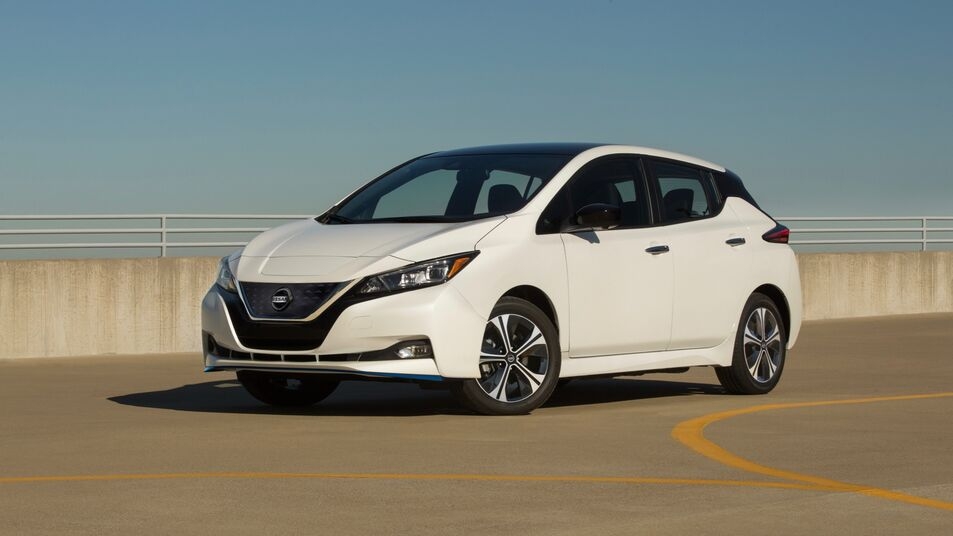you’re cruising down the road, you press the brake pedal, and suddenly your car starts shaking like it’s auditioning for a dance competition. Ever had that happen? It’s unsettling, right? That wobble can make any driver wonder, “Is my car safe to drive?” or “What’s going on under the hood?” Don’t worry—you’re not alone; it’s a common issue that’s got a fix.
In this blog, we’re diving deep into why your car shakes when you brake. We’ll break it down with clear explanations and practical solutions to get you back to smooth driving. From warped brake rotors to worn tires, we’ll cover the top culprits—brake pads, brake calipers, suspension components, and more—plus give you tips to figure it out and keep it from happening again. Ready? Let’s roll!
Understanding the Braking System
What Is the Braking System and How Does It Work?
Your car’s braking system is like a superhero team that stops your ride when you need it to. Here’s the lineup:
- Brake Pedal: You push it—it’s the boss giving the “stop” order.
- Master Cylinder: Turns that push into hydraulic pressure, like a quarterback calling the play.
- Brake Lines: The pipes that carry that pressure to the action spots.
- Brake Calipers: These squeeze the brake pads against the brake rotors (aka disc brakes) to slow you down.
- Rotors and Pads: The metal discs and grippy pads that team up to stop the wheels.
When you hit the brake pedal, hydraulic pressure flows through the brake lines, telling the calipers to clamp the pads onto the rotors. That friction slows your car down by turning motion into heat. Pretty cool teamwork, huh?
Why Does Shaking Happen During Braking?
So, why does your car turn into a jitterbug when you brake? Shaking usually means something’s off in this team. Maybe there’s uneven pressure, a worn-out part, or something’s just not fitting right. It’s like a glitch in the system—think of it as your car’s way of saying, “Hey, check me out!” Let’s dig into the reasons.
Common Causes of Car Shaking When Braking
Warped Brake Rotors
What Are Brake Rotors and How Do They Work?
Brake rotors (or brake disks) are the shiny metal discs your brake pads grab onto to stop the car. They’re key players in disc brakes, soaking up your car’s energy and turning it into heat to slow you down.
What Causes Brake Rotors to Warp?
Warped rotors happen when things get too hot—like from slamming the brakes hard (hello, aggressive braking habits!)—or if the lug nuts aren’t tightened right after a tire swap. Uneven wear or a bad brake job can also twist them out of shape. Did you know? The National Highway Traffic Safety Administration says brake-related issues cause about 22% of crashes. Yikes—those rotors matter!
Signs of Warped Brake Rotors
- A pulsing or shaking feeling in the steering wheel or brake pedal.
- Weird noises like grinding or thumping when you brake.
How to Check for Warped Rotors
Peek at your rotors—see any funky discoloration or grooves? That’s a red flag. If you’re a DIY fan, grab a dial indicator to measure variation in thickness or “runout” (how much it wobbles). More than 0.003 inches? Time for a brake replacement!
Worn Brake Pads
The Role of Brake Pads in Braking
Brake pads are the grippy pads inside the calipers that hug the rotors to stop your car. Without them, you’d be sliding all over! They’re all about creating that sweet friction for efficient brake operation.
What Causes Brake Pads to Wear Out?
Pads wear down from rough driving habits, cheap materials, or grit and water sneaking in. Ever hear that squeal? That’s the wear indicator yelling, “Replace me!”
Signs of Worn Brake Pads
- High-pitched brake noise like squealing or screeching.
- Braking feels weak, or the pads look thin—less than 1/4 inch is bad news.
How to Inspect Brake Pads
Pop off a wheel and check the brake pad thickness. Less than 1/4 inch? Swap ‘em out with help from your service team. Uneven wear? Could mean a stuck brake caliper or dirty brake hardware.
Brake Caliper Issues
What Are Brake Calipers and Their Function?
Brake calipers hold the pads and press them against the rotors when you brake. They’re like the muscle of the brake assemblies, making sure everything squeezes just right.
Common Caliper Problems
Rust, dirt, or a leaky brake fluid seal can make calipers stick. That messes with your brake pressure and can lead to brake shakes.
Symptoms of Caliper Malfunctions
- Uneven brake pad wear or uneven tire wear.
- Car pulls to one side when you brake—sound familiar?
- Shaking through the steering wheel.
How to Diagnose Caliper Problems
Look for brake fluid leaks near the caliper. Press the brakes—does it let go smooth? If not, you might need a brake fluid service or a fix from expert technicians.
Suspension Problems
How Does the Suspension System Affect Braking?
Your suspension components—shocks, struts, and bushings—keep your tires glued to the road. They’re like your car’s legs, steadying it when you brake. Worn out? You’re in for a bouncy ride!
Common Suspension Issues That Cause Shaking. Want to know more, visit our website…
Worn suspension bushings or beat-up shocks can’t dampen movement, leading to shakes.
Signs of Suspension Problems
- Car bounces like a trampoline after braking.
- Uneven tire wear or shakes at certain speeds.
How to Check for Suspension Issues
Try the bounce test: push down hard on each corner. More than a couple bounces? Your shocks are toast. Check for leaks or damage—time for expert team help if it’s bad.
Tire Problems
The Importance of Tires in Braking
Tires are your car’s feet, gripping the road so you stop safely. Unbalanced tires or worn tires? That’s a recipe for shakes.
Common Tire Issues That Cause Shaking
- Improper tire balance, misalignment, or damage like cuts or bulges.
- Even loose wheel bearings can throw things off.
Signs of Tire Problems
- Vibration that gets worse at certain speeds.
- Wobbly wheels or funky wear patterns.
How to Maintain and Check Tires
Rotate and balance every 5,000–7,500 miles—your service provider can hook you up. Check pressure monthly (aim for the manual’s number, like 371-7141 kPa if metric). A 4-Wheel Alignment keeps wear even and your ride smooth.
Troubleshooting and Diagnosis
Ever hit the brakes and felt your car shake like it’s doing a little dance? Not cool, huh? Don’t worry—we’re gonna figure out what’s causing those brake shakes step by step. Grab your detective hat, and let’s dive in!
Steps to Identify the Cause of Shaking
1. Visual Inspection
First things first, pop the hood and take a peek at your brake components. We’re talking brake rotors, brake pads, and brake calipers. What should you look for?
- Warped rotors: These metal discs might have grooves or funky colors if they’re not flat anymore.
- Worn brake pads: If they’re thinner than your pinky nail (about a quarter-inch), it’s time for a Rear Brake Pad Replacement.
- Brake caliper trouble: Spot any brake fluid leaking? That’s a red flag.
While you’re at it, check your suspension components and tires. Worn suspension bushings or unbalanced tires can make your ride jittery too. See uneven tire wear? That’s a clue something’s off!
2. Test Driving
Now, take your car for a spin—safely, of course! Drive at different speeds and hit the brake pedal gently, then firmly. Ask yourself:
- Does it shake more at high speeds or low speeds?
- What about the steering wheel—is it wobbling too?
- Does the shaking kick in only when I press hard?
These little details can tell you if it’s a brake-related issue, loose wheel bearings, or maybe even a bad tire. Jot down what you notice—it’ll help later!
3. Error Codes
Got a tech-savvy car? Grab an OBD-II scanner—it’s like a car whisperer. Plug it in under the dash and check for warning lights or codes tied to brakes or suspension. No scanner? No stress—your eyes and ears are still solid tools. But if you’ve got one, it’s a fast way to spot brake system maintenance needs. Fun fact: According to the National Highway Traffic Safety Administration (NHTSA), 22% of car crashes involve brake issues. Yikes—better to catch those codes early!
When to Seek Professional Help
So, you’ve poked around, but the shaking’s still there. What now? If you’re stumped, out of tools, or just not feeling confident, call your service team. Brake repair specialists have the know-how and gear to tackle major repairs. And if the shaking’s bad—like, “I’m scared to drive” bad—don’t wait. Vehicle safety is no joke. Severe vibes could mean stuck brake calipers or worse, and that’s a mechanic’s territory. Trust me, it’s better to spend a little now than a lot later!
Prevention and Maintenance Tips
Nobody wants to deal with brake shakes twice, right? Let’s talk about keeping your car steady with some simple habits and TLC.
How to Prevent Braking Issues
1. Regular Brake Inspections
Get your brake assemblies checked every 12,000 miles—or whatever your car’s manual says. It’s like a dentist visit for your disc brakes and drum brakes. Spotting dirty brake pads or low brake fluid early can dodge bigger headaches.
2. Proper Braking Techniques
Be nice to your brake pedal! Skip the aggressive braking habits—no slamming or riding the brakes downhill. That heats up your brake rotors and wears out brake pads fast. Smooth braking keeps the hydraulic pressure happy and your car steady.
3. Quality Components
When it’s time for a brake job, go for the good stuff—high-quality brake hardware, rotors, and pads. Yeah, they might cost more upfront, but they last longer and brake better. I’ve seen cheap parts fail quick—trust me, splurging here pays off. Bonus: Some shops offer a Price Match Guarantee (call 371-7141 to check!).
Tire Maintenance for Optimal Braking
Your tires are brake buddies—keep ‘em in shape!
- Regular Rotation and Balancing: Every 5,000–7,500 miles, rotate and balance to avoid improper tire balance or worn tires. It’s like a spa day for your wheels!
- Alignment Checks: Hit a pothole? Get a 4-Wheel Alignment yearly or ASAP. Misalignment messes with brake operation and causes shakes.
Suspension Care
Don’t sleep on your suspension components—they’re the backbone of a smooth ride.
- Routine Inspections: Next oil change or tire rotation, ask your expert technicians to peek at the suspension. Catching loose suspension early is a win!
- Timely Replacements: Worn shocks or struts? Swap ‘em out fast. It’s not just comfort—it keeps your car stable when braking.
Conclusion
Here’s the rundown: if your car’s shaking when you brake, the culprit behind vehicles misbehaving is usually one of five suspects—warped brake rotors, worn brake pads, stuck brake calipers, suspension problems, or tire troubles. Fixes range from a brake fluid service to a full brake replacement. Don’t guess—check it out with the steps above or hit up your service provider.
Call to Action: Got shakes? Don’t wait—inspect your ride or book with your expert team today. A quick fix now beats a difficult time later.
Final Thought: A shake-free ride isn’t just about that luxury driving experience—it’s about keeping you and everyone safe. The NHTSA says brake problems contribute to over 300,000 crashes yearly—let’s not be a stat! With a solid 2-year warranty on repairs, you’re set for smooth sailing. So, press that brake pedal with confidence—your car’s got this!







